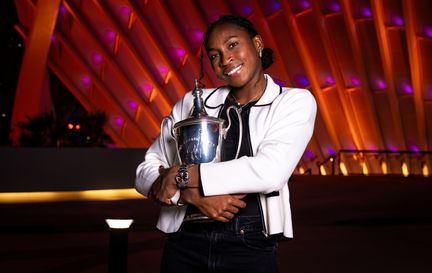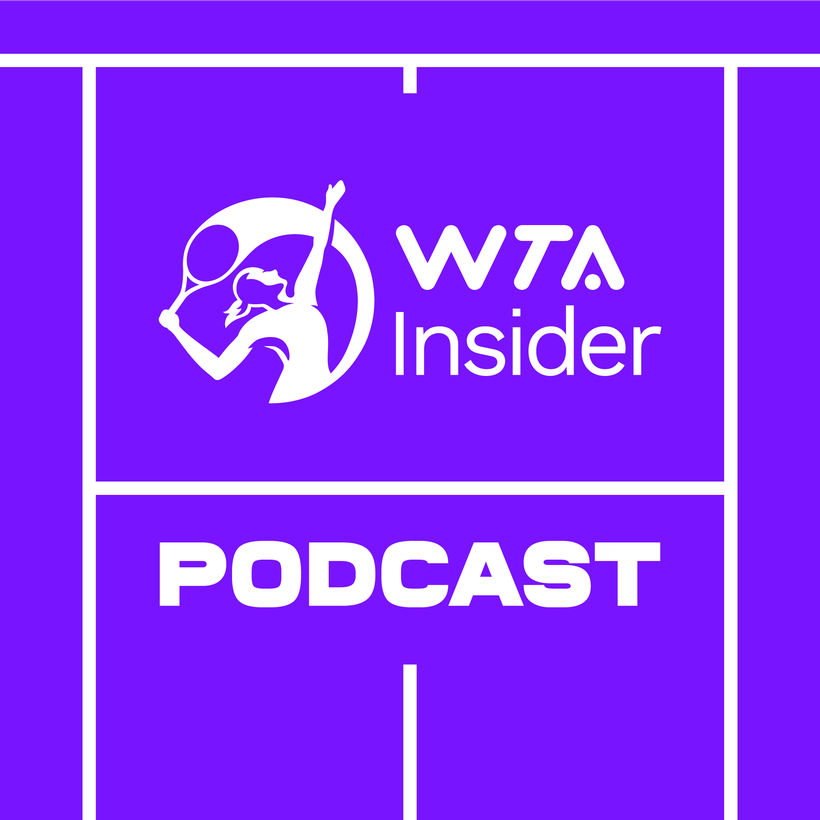INDIAN WELLS, CA, USA - Hsieh Su-Wei continued her impressive start to 2018, this time in doubles alongside Barbora Strycova to upset top seeds and Olympic gold medalists Ekaterina Makarova and Elena Vesnina, 6-4, 6-4 to win the BNP Paribas Open.
The duo overcame blustery conditions to flummox the big-hitting Russians with spins, slices, and forays to the net, recovering from a break down in the second set to clinch victory in 83 minutes on Stadium 1.
"It was tough, because it was first time for us to play on center court, and it was very tricky conditions," Strycova said. "So you have to focus much more on your service game to put first serves in a lot, like, more percentage than normal.
"You have to play just a little bit differently. Against the wind, we tried to use more lobs. We were maybe little better in these tricky points."
Hsieh and Strycova were a last-minute pairing in Indian Wells; Hsieh committed to enter with Monica Niculescu while Strycova had initially planned to play with Svetlana Kuznetsova, and later with Andrea Sestini Hlavackova.
Incidentally, Niculescu and Sestini Hlavackova ended up playing Indian Wells together, and the pairs will switch back for the upcoming Miami Open.
"There was some rule changes, and so we couldn't switch," Strycova explained. "So we say, Okay, we will play together, and they will play together. So this is how we end up."
Still, there was reason to think this could be a successful combination between two players who are both experienced doubles players, as Hsieh is not only a former No.1 in the discipline but also an Indian Wells champion, first winning the title back in 2013 with Peng Shuai. Strycova has built successful partnerships with the likes of Sania Mirza and Lucie Safarova in the last two seasons.
🏆
Your 2018 Women's Doubles Champions, @BaraStrycova and Hsieh Su-Wei!#BNPPO18 pic.twitter.com/5FCXKxWCc1— BNP Paribas Open (@BNPPARIBASOPEN) March 18, 2018
"Barbora just crushed all the volleys," Hsieh said. "I just focused on putting my ball in on the baseline. I was feeling better after the first match. We are going better and better.
"We know each other, too," Strycova added. "We are same age, and we played juniors together. We didn't know each other so much to play together sooner, but off the court we know each other very well."
The best teams in recent memory posess a notable contrast where one partner makes up for where the other lacks. Neither Hsieh nor Strycova play particularly powerful tennis from the back of the court; their contrast is emotional rather than tactical.
"She's very calm and I'm very emotional, and it fits," Strycova said. "She forces me to stay calm, think a little bit, and then take it easy. That works for me."
"I cannot be emotional!" Hsieh added.
"No, she cannot," Strcova finished with a smile.
While power has largely taken the sport by storm, Strycova called her and Hsieh's victory a win for "old-school tennis," where finnesse may yet reign in the doubles game, even in the face of teams like Makarova/Vesnina, reigning Australian Open champions Timea Babos and Kristina Mladenovic, and former No.1s Bethanie Mattek-Sands and Safarova, who will likely return next week in Miami following Mattek-Sands' knee injury.
"You don't have to have so much power to win tournaments or matches. You can overcome the power with tricky points, to think how you plan the point every time, to cross, or play serve and volley.
"So it still works and it's nice. It's a little bit that maybe we play old-school tennis, but it's still working."





![[3] Daria Kasatkina d. Peyton Stearns 7-6(7), 4-6, 7-5, Brisbane R2 (3:21). Kasatkina saved two set points trailing 6-5 in the first set, and went on to win her fourth match in six encounters with Stearns.](https://photoresources.wtatennis.com/photo-resources/2025/01/01/f512523f-8aa5-47d9-84c8-c84bf27ed225/Kasatkina-R2-Patrick-Hamilton-AFP.jpg?width=451&height=268)


